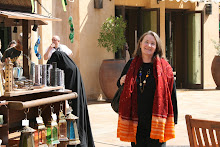“Hello, I am Mr.Kadoo, would you like to buy a Persian carpet?” a thickly accented voice asked at the other end of the phone. Back then we were living in Hong Kong which seemed to be a destination for many of the beautiful rugs from the East. I always abruptly terminated these calls however this time I paused. Perhaps we could do with another rug or two.
The next day at the appointed time a truck pulled up at the bottom of our apartment block and two men pulled out an assortment of rolled carpets piling them into the lift. They were soon in our apartment and my daughter Rosie and I exclaimed with delight as rug after rug was unfurled. What clever marketing tactics these Indian salesmen had devised. They were happy to bring the rugs to my home and even offered to leave my favourite ones with me for a few days to see how they felt to live with before making a final acquisition. I couldn’t allow that though as I knew that inevitably by the time the salesmen returned to remove the unwanted carpets I would have been thoroughly seduced by them all.
As good architecture adds incalculably to the quality of a living environment so can these rugs equally enhance living spaces. A wise old aristocratic Danish woman I once knew used to say that really you don’t need anything else but Persian rugs and nice paintings on the walls to create a beautiful, harmonious living environment. A total lack of furniture just cushions on the floor and it all still feels and looks wonderful. Of course with such an intriguing history, spiced with
“…imperial kings, swordsmen, folktales and cauldrons of steaming colors, lumbering caravans and scheming merchants” as Brian Murphy describes in his book
In Search of Wild Madder, how can they fail to provide a Bohemian flourish to any home.

I’ve always been most attracted to the tribal hand woven rugs of Iran and Afghanistan. Traditionally these are dyed with the warm rich muted colours of vegetable dyes extracted from plants such as indigofera, chamomile and wild madder root from which comes the most gloriously perfect reds through to softest delicate pinks. Murphy tells us that the madder root was used by master artists such a Vermeer as in his famous painting
Girl in a Red Hat below, to provide glowing red glazes and by alchemists to empower their spells.

At this point I must seize the opportunity to share a little more of the spellbinding account of Azhar Abidi in
The Secret History of the Flying Carpet (more of which is written about in the post below) It seems the power to fly inherent in a these carpets was not imbued through special weaving techniques or sorcery but from the dying process using a special clay ‘procured from mountain springs and untouched by human hand which, when superheated at temperatures that exceeded those of the seventh ring of hell in a cauldron of boiling Grecian oil, acquired magnetic properties’. Abidi explains that the earth is overlaid with trillions of magnetic lines and that as the carpets were completed they would be magnetically pulled away from the earth along these ley lines, hovering a few feet or hundreds of feet in the air.
And one more juice morsel - according to Ben Shira, “…the great library of Alexandria, founded by Ptolemy 1, kept a large stock of these flying carpets for readers. They could borrow these carpets in exchange for their slippers and glide back and forth, up and down, among the shelves of papyrus manuscripts. Housed in a ziggurat that contained forty thousand scrolls… the ceiling of this building was so high that readers often preferred to read while hovering in the air”. Ah dear, what heady stuff!
Anyway back in Hong Kong on that day of the unfurling of the rugs in our apartment Rosie and I chose three beautiful small rugs from Afghanistan and Persia, which is far less romantically and less evocatively named Iran these days. After the men left I overheard my daughter making a phone call, her wicked sense of humour getting the better of her. It was a crank call to some poor unsuspecting person. When they picked up the phone Rosie said in an unnaturally deep thickly accented voice, “ Hello, I’m Mr Kadoo, would you like to buy a Persian rug?” followed by smothered giggles. Here is a detail of one of the rugs. As usual, Archie managed to squeeze a piece of himself in.

NB
So enamored have I been with the gorgeousness of the reds in madder I was inspired to do a painting to simply explore them further. Here is a small slice of it.













